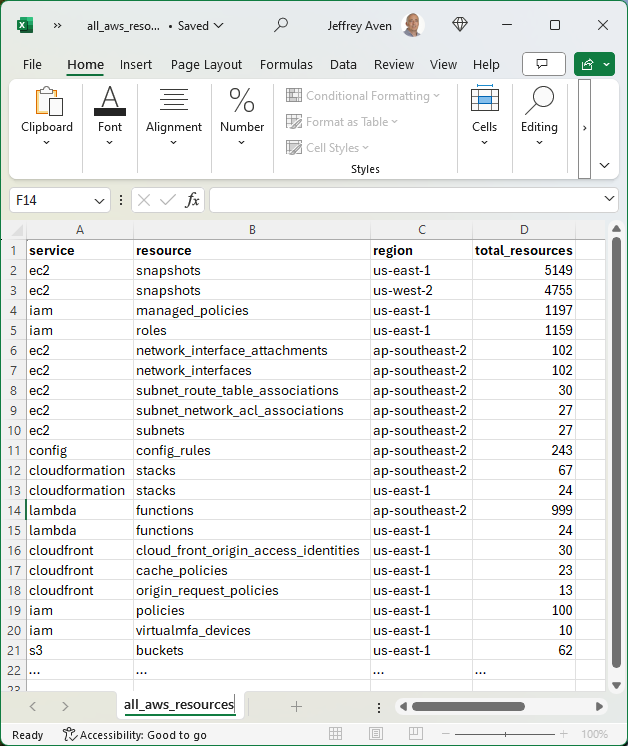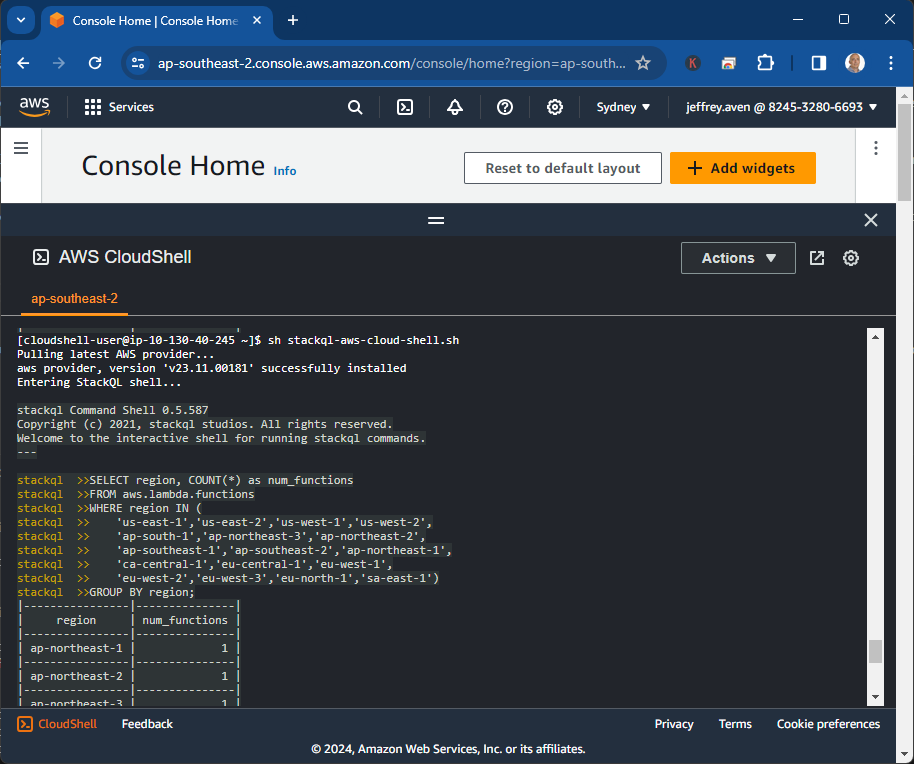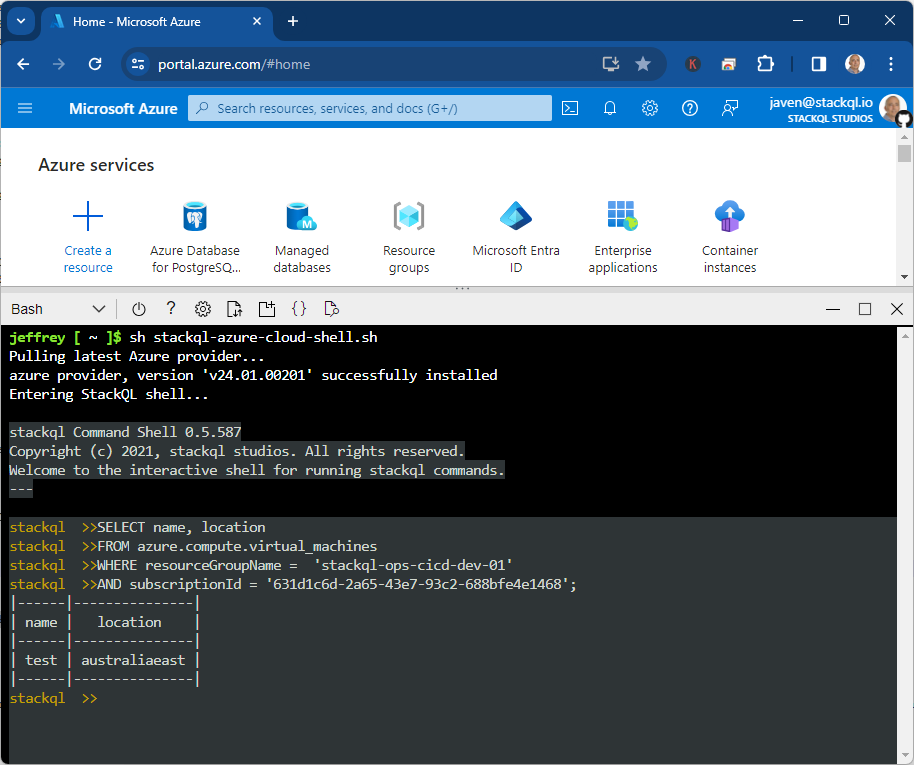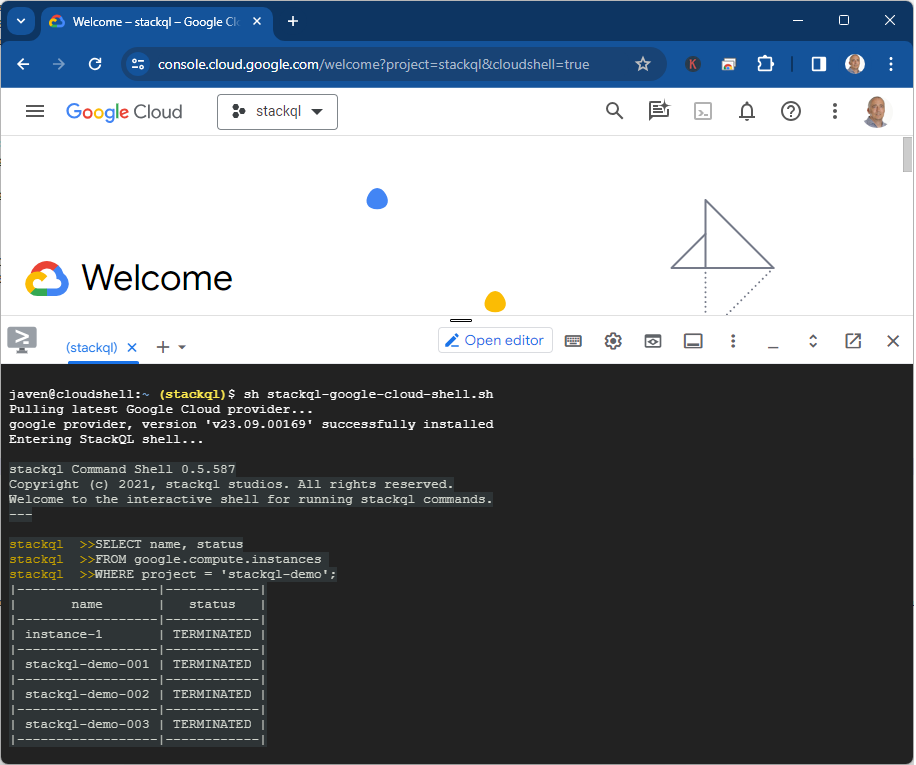(Quickly) Identify Old Node Runtimes in AWS Lambda
Have you been sent one of these?
[Action Required] AWS Lambda end of support for Node.js 18 [AWS Account: 824123456789] [EU-CENTRAL-1]
If you are like me and manage AWS accounts with numerous Lambda functions potentially deployed across multiple regions, you need to identify affected resources, in this case, Lambda node runtimes, which will be discontinued later this year.
With stackql this task is easy...
- Open AWS cloud shell in your AWS account (any region - it doesn't matter)
- Download
stackql
curl -L https://bit.ly/stackql-zip -O && unzip stackql-zip
- Open an authenticated
stackqlcommand shell
sh stackql-aws-cloud-shell.sh
- Run some analytic queries using
stackql; here are some examples...
🔍 List all functions and runtimes across regions
Run a stackql query to get the details about functions, runtimes, etc, deployed at any given time across one or more AWS regions. You can include all 25 AWS regions; each query will be performed asynchronously - speeding up the results.
- Query
- Results
select
function_name,
region,
runtime
FROM aws.lambda.functions
WHERE region IN ('us-east-1', 'eu-west-1');
|----------------------------------------------|---------------|------------|
| function_name | region | runtime |
|----------------------------------------------|---------------|------------|
| order-processing-handler | us-east-1 | nodejs16.x |
|----------------------------------------------|---------------|------------|
| payment-service-lambda | us-east-1 | nodejs18.x |
|----------------------------------------------|---------------|------------|
| user-notifications-service | us-east-1 | python3.8 |
|----------------------------------------------|---------------|------------|
| generate-invoice-pdf | eu-west-1 | nodejs18.x |
|----------------------------------------------|---------------|------------|
| realtime-data-stream-processor | eu-west-1 | java11 |
|----------------------------------------------|---------------|------------|
| chat-message-router | eu-west-1 | nodejs20.x |
|----------------------------------------------|---------------|------------|
| scheduled-maintenance-checker | ap-southeast-2| python3.11 |
|----------------------------------------------|---------------|------------|
| s3-image-thumbnail-generator | ap-southeast-2| nodejs16.x |
|----------------------------------------------|---------------|------------|
| email-delivery-status-updater | ap-southeast-2| python3.8 |
|----------------------------------------------|---------------|------------|
📊 Group by runtime and region
Perform an analytic query like a group by aggregate query such as...
- Query
- Results
select
runtime,
region,
count(*) as num_functions
FROM aws.lambda.functions
WHERE region IN ('us-east-1', 'eu-west-1', 'ap-southeast-2')
GROUP BY runtime, region;
|--------------|----------------|---------------|
| runtime | region | num_functions |
|--------------|----------------|---------------|
| nodejs16.x | us-east-1 | 102 |
|--------------|----------------|---------------|
| nodejs18.x | us-east-1 | 98 |
|--------------|----------------|---------------|
| python3.8 | us-east-1 | 138 |
|--------------|----------------|---------------|
| nodejs18.x | eu-west-1 | 40 |
|--------------|----------------|---------------|
| java11 | eu-west-1 | 113 |
|--------------|----------------|---------------|
| nodejs20.x | eu-west-1 | 120 |
|--------------|----------------|---------------|
| python3.11 | ap-southeast-2 | 384 |
|--------------|----------------|---------------|
| nodejs16.x | ap-southeast-2 | 88 |
|--------------|----------------|---------------|
| python3.8 | ap-southeast-2 | 18 |
|--------------|----------------|---------------|
You can easily visualise this data using a notebook; see stackql-codespaces-notebook or stackql-jupyter-demo.
Using StackQL you can:
- Quickly spot functions running on runtimes like
nodejs18.xthat are approaching end of support. - Plan your upgrades region-by-region with confidence.
⭐ us on GitHub and join our community!



